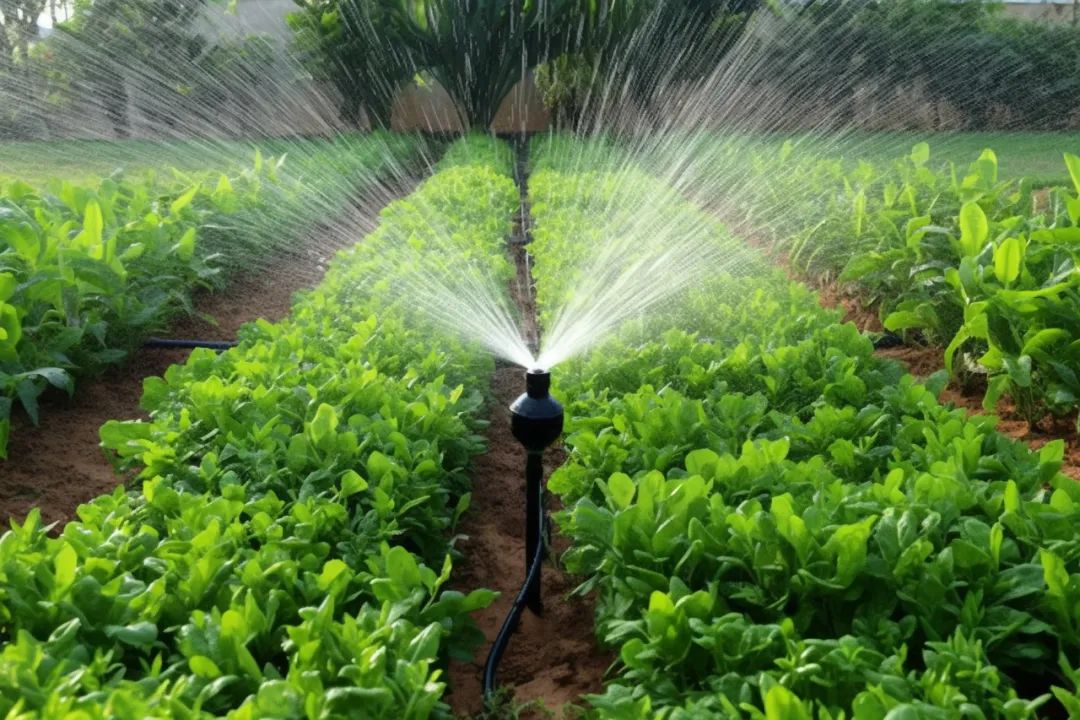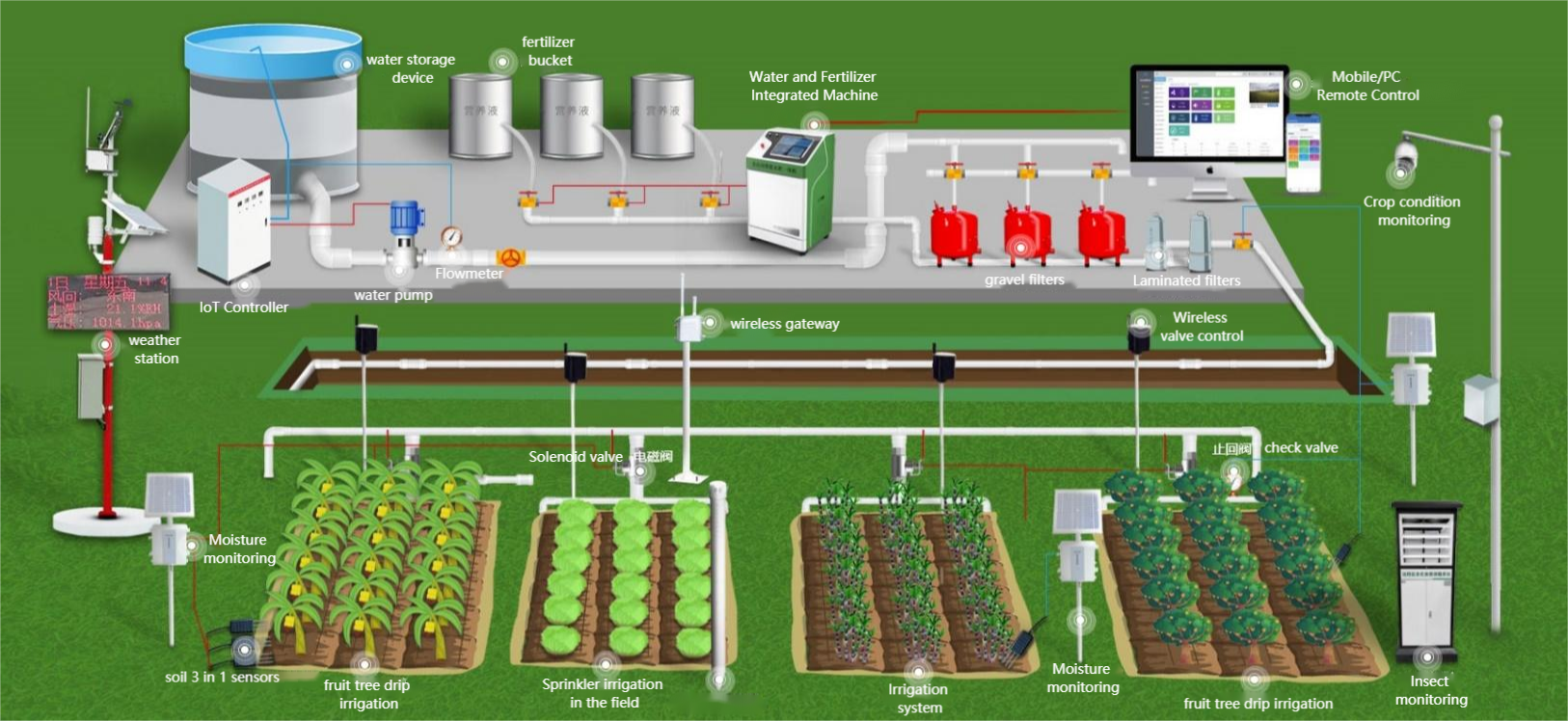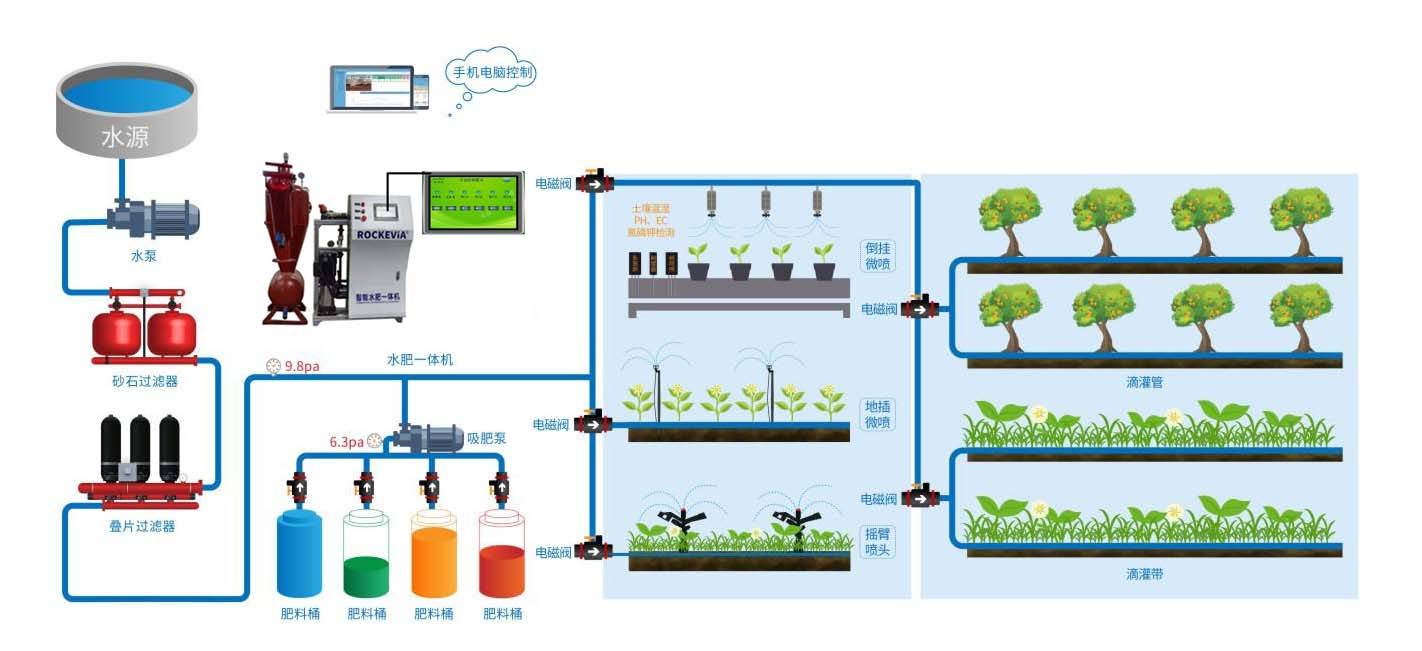

— Blogs —
—Products—
 Consumer hotline +8618073152920
Consumer hotline +8618073152920 WhatsApp:+8615367865107
Address:Room 102, District D, Houhu Industrial Park, Yuelu District, Changsha City, Hunan Province, China
Product knowledge
Time:2025-04-08 11:25:38 Popularity:52
In the practice of agricultural production and water resource management, soil moisture monitoring stations are becoming an indispensable tool. By accurately monitoring soil moisture content and temperature, they provide scientific evidence for agricultural disaster resistance, irrigation optimization, and water resource distribution. This article will provide a detailed introduction to the working principle, core functions, and wide applications of soil moisture monitoring stations, helping readers understand how this technology promotes the development of modern agriculture.

A soil moisture monitoring station is a device designed specifically to monitor soil moisture content and temperature. It typically consists of multiple sensors, data acquisition devices, power systems, and data transmission modules, capable of collecting key data from different soil depths in real-time. Compared to traditional manual measurement methods, soil moisture monitoring stations achieve automation, continuous operation, and high-precision monitoring, making them particularly suitable for scenarios that require long-term tracking of soil conditions.
The core technology is based on the dielectric constant principle, which determines moisture content by measuring the impact of water in the soil on the electric field. This method is not only fast and accurate but also covers soil profiles from surface to deeper layers, providing users with comprehensive soil moisture information. In addition, modern monitoring stations are integrated with other functions, such as monitoring soil inclination, further enriching the data dimension.

The core of the soil moisture monitoring station is its moisture and temperature sensors. These sensors use the dielectric constant principle to measure the soil's moisture content by emitting high-frequency detection waves, while built-in temperature probes record changes in soil temperature. The multi-layer design of the sensors allows monitoring of soil conditions at different depths, such as 10 cm for shallow-rooted crops or up to 50 cm for deep-rooted plants.
In addition to basic temperature and humidity monitoring, some soil moisture monitoring stations are equipped with inclination sensors to detect the soil's slope angle. This feature is particularly important in mountainous agriculture or slope land management, helping analyze soil erosion risks or stability, and providing additional support for drought resistance and flood prevention.
Through 4G/5G/WiFi networks, the monitoring station can upload real-time data to the cloud platform. Users can access the data anytime via mobile phones or computers, viewing the dynamic changes in soil conditions. This remote access function greatly enhances response speed, especially during disasters such as droughts or floods, allowing users to take timely countermeasures.
Soil moisture monitoring stations typically use PVC plastic shells, which are sturdy, durable, and effectively penetrate high-frequency detection waves, ensuring measurement accuracy without being affected by soil salinity or agricultural activities such as fertilization. The equipment is powered by built-in batteries and supports external power sources or solar panels, making it suitable for long-term outdoor operation. In addition, its encapsulation technology makes it completely waterproof, ensuring stable operation even in extreme weather.

Soil moisture monitoring stations have a wide range of applications across agriculture, water conservancy projects, meteorological monitoring, and other fields. Below are the specific roles they play in different scenarios:
Precision irrigation is a key trend in modern agriculture. Soil moisture monitoring stations help farmers determine whether crops need water and the amount of water required by monitoring soil moisture in real-time. For example, when soil moisture in the surface layer drops below the crop's required threshold, the system can send an alert to avoid over- or under-irrigation. This method not only improves water resource utilization but also enhances crop yield and quality.
In regions prone to drought, soil moisture monitoring stations can provide early warnings of insufficient soil moisture. By analyzing the moisture trends in deeper soil layers, agricultural managers can formulate scientific drought response plans, such as adjusting irrigation schedules or accessing reservoir resources. The addition of inclination sensors provides extra data support for slope land drought resistance, preventing water loss due to topographical factors.
In the field of water conservancy, soil moisture monitoring stations provide critical data for water storage and diversion projects. For instance, by monitoring the saturation levels of soil in a watershed, engineers can determine whether adjustments are needed to the dam's release volume, optimizing water resource allocation and reducing waste.
With the development of the Internet of Things (IoT) and big data technologies, soil moisture monitoring stations can work in conjunction with other agricultural equipment, such as smart irrigation systems, to achieve automated management. For example, when soil moisture drops, the system can automatically activate drip irrigation equipment without manual intervention. This intelligent solution significantly improves agricultural production efficiency and sustainability.
Compared to traditional soil monitoring methods, soil moisture monitoring stations offer the following advantages:
- High Precision and Multi-Dimensional: Able to monitor moisture, temperature, and inclination simultaneously, providing comprehensive soil data.
- Real-Time and Convenient: Data is uploaded in real-time, and users can access it anytime, anywhere.
- Strong Adaptability: The waterproof, durable design and various power supply options make it suitable for various outdoor environments.

With its precise monitoring capabilities and wide range of applications, the soil moisture monitoring station is transforming the way agricultural production and water resource management are conducted. From optimizing irrigation to combating natural disasters, it provides reliable data support, promoting smarter and more efficient agriculture. For modern agriculture, which strives for sustainability, soil moisture monitoring stations are undoubtedly a technology worth investing in. As their functionality continues to improve, this technology will play a greater role in global agriculture, contributing to food security and resource conservation.
1.NBL-S-THR Soil Temperature Moisture Sensor datasheet
NBL-S-THR-Soil-temperature-and-moisture-sensors-Instruction-Manual-V4.0.pdf
2. NBL-S-TMC Soil Temperature Moisture EC Sensor datasheet
NBL-S-TMC-Soil-temperature-and-moisture-conductivity-sensor.pdf
3. NBL-S-TM Soil Temperature Moisture Sensor datasheet
NBL-S-TM-Soil-temperature-and-moisture-sensor-Instruction-Manual-4.0.pdf
4. NBL-S-TMCS Soil Temperature, Moisture, Conductivity and Salinity Integrated Sensor
NBL-S-TMCS-Soil-Temperature-Humidity-Conductivity-and-Salinity-Sensor.pdf
Prev:Soil Moisture Monitoring Stations and Sensors: Smart Assistants for Modern Agricultural Production
Next:Visibility Monitoring Stations: Smart Devices Guarding Traffic and Environmental Safety
Related recommendations
Sensors & Weather Stations Catalog
Agriculture Sensors and Weather Stations Catalog-NiuBoL.pdf
Weather Stations Catalog-NiuBoL.pdf
Related products
 Combined air temperature and relative humidity sensor
Combined air temperature and relative humidity sensor Soil Moisture Temperature sensor for irrigation
Soil Moisture Temperature sensor for irrigation Soil pH sensor RS485 soil Testing instrument soil ph meter for agriculture
Soil pH sensor RS485 soil Testing instrument soil ph meter for agriculture Wind Speed sensor Output Modbus/RS485/Analog/0-5V/4-20mA
Wind Speed sensor Output Modbus/RS485/Analog/0-5V/4-20mA Tipping bucket rain gauge for weather monitoring auto rainfall sensor RS485/Outdoor/stainless steel
Tipping bucket rain gauge for weather monitoring auto rainfall sensor RS485/Outdoor/stainless steel Pyranometer Solar Radiation Sensor 4-20mA/RS485
Pyranometer Solar Radiation Sensor 4-20mA/RS485
Screenshot, WhatsApp to identify the QR code
WhatsApp number:+8615367865107
(Click on WhatsApp to copy and add friends)